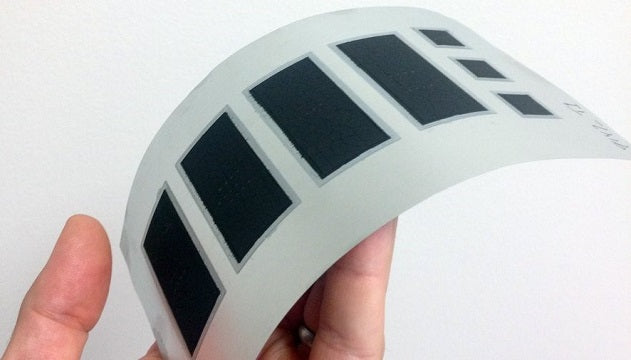With the rapid increase in energy demands, there is a need to develop efficient, highly capable yet compact energy storage devices, and guess what, scientists have already invented the cure. Paper batteries are incredibly lightweight, ultrathin, flexible paper structures that can be used as a typical Ni-Cd battery of 1.5 V. As the name suggests, these can be used just like paper, that can be trimmed, twisted, bent, folded, or molded into desired shapes and sizes.

Fig 1: Paper Battery[1]
To put it in simple words, Paper batteries are made with cellulose paper and Carbon Nanotubes. Carbon Nanotubes are allotropes of Carbon. Check here to know what do you mean by Allotropes.
Carbon Nanotubes transform a simple cellulose paper into an energy source mainly due to the following reasons:
- Carbon Nanotubes are very flexible and lightweight.
- They offer high tensile strength.
- They are undoubtedly good conductors of electricity.
- They have high packing density and low mass density.
- They provide low resistance.
History:
The creation of Paper Battery drew from a diverse pool of disciplines, requiring expertise in material science, energy storage, and chemistry. In August 2007, a research team at RENSSELAER POLYTECHNIC INSTITUTE led by Dr. Robert Linhart, John H. Broadbent, Pulickel M. Ajayan, Omkaram Nalasamu had a joint appointment in Material science and engineering. Thus the Paper Battery was developed, also known as NANO COMPOSITE PAPER. In December 2009, YI CUI and his team at STANFORD UNIVERSITY successfully made an actual prototype that gave a terminal voltage of 1.5 V.
How are they made?
These batteries work on the same principle as any other battery like a Li-Ion battery, NiCd Battery, etc. The major components which form the building blocks of these batteries are Copier paper and Carbon Nano Ink yeah just two of them. That’s the reason why Paper Batteries are such a breakthrough in Energy storage fields. Let’s know the procedure:

Step 1: Carbon nano ink, a black color solution of Nanorods of carbon, surface adhesive agent, an ionic salt solutions, is spread on one side of the paper.
Step 2: The paper is then heated in a microwave oven at 150 degrees Celsius. This process evaporated the excess water from the paper and then Done it!

The battery is ready and would provide terminal voltage enough to run the clock, remote or light a LED, flashlight, etc.
Prominent Features:
- The Nanotubes are electrodes here and allow the conduction of electricity.
- The paper batteries function both as Li-ion like cell and a supercapacitor, which stores charge like a battery but no liquid electrolyte.
- There is no water, only ionic salt, so that the batteries won't freeze or boil.
- There are claims that this ionic salt could be replaced with body fluids like blood sweat etc.
Why are they better?
- Non-toxic thus can be used to run pacemakers.
- If we stack say 100 sheets in a ream, that’s equal to 100 times the unit voltage. Similarly, tearing them into halves, we reduce the voltage by 50%; it’s that simple!!!!
- 100% environment friendly
- Because of their flexible, rugged, light nature, they have an enormous scope in the satellite industry.
- Disposable single-use diagnostic devices.
- RF-ID tags and smart wearable gadgets like smart clothes.

The possibilities are many. These batteries are also rechargeable and low cost, which itself may give rise to many new applications. This promising technology is still under the research phase, though. Presently, the devices are only a few inches across and have to be scaled up to larger sizes to make them commercially available.
Sources:
sustainableskies.org/wp-content/uploads/2015/06/paper-battery-ultracapacitor-circle.jpgslideshare.net/adhipsebingeorge/paper-battery
youtube.com/watch?v=uWgwPls8M8g
youtube.com/watch?v=dxZ8wsMyuY8
images.app.goo.gl/UVRZi64TBDzZVQzKA
images.app.goo.gl/SjcRcwJQcSxcSzer6


Where i can i buy
Paper battery kit.